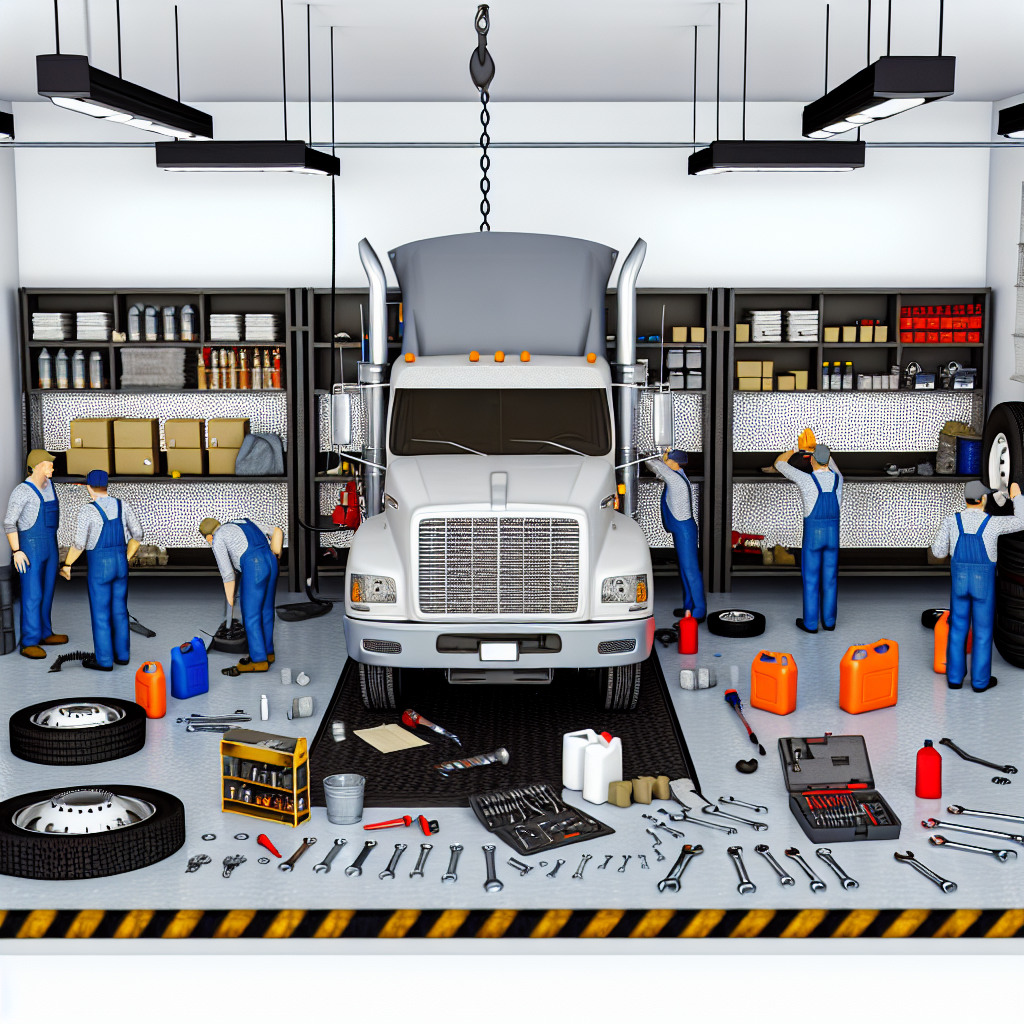When it comes to keeping your vehicle looking pristine, the art and science of Automotive Paint Color Matching play a crucial role. Not just a mere aesthetic choice, the right color can significantly impact a car’s resale value, making it a vital consideration for both car enthusiasts and everyday drivers alike.
Color matching is part science experiment, part art project.
This perfectly encapsulates the delicate balance between technical precision and creative flair in achieving that flawless finish. Whether you’re touching up scratches or contemplating a full repaint, understanding the nuances of color matching will ensure that your vehicle maintains its appeal on the road.
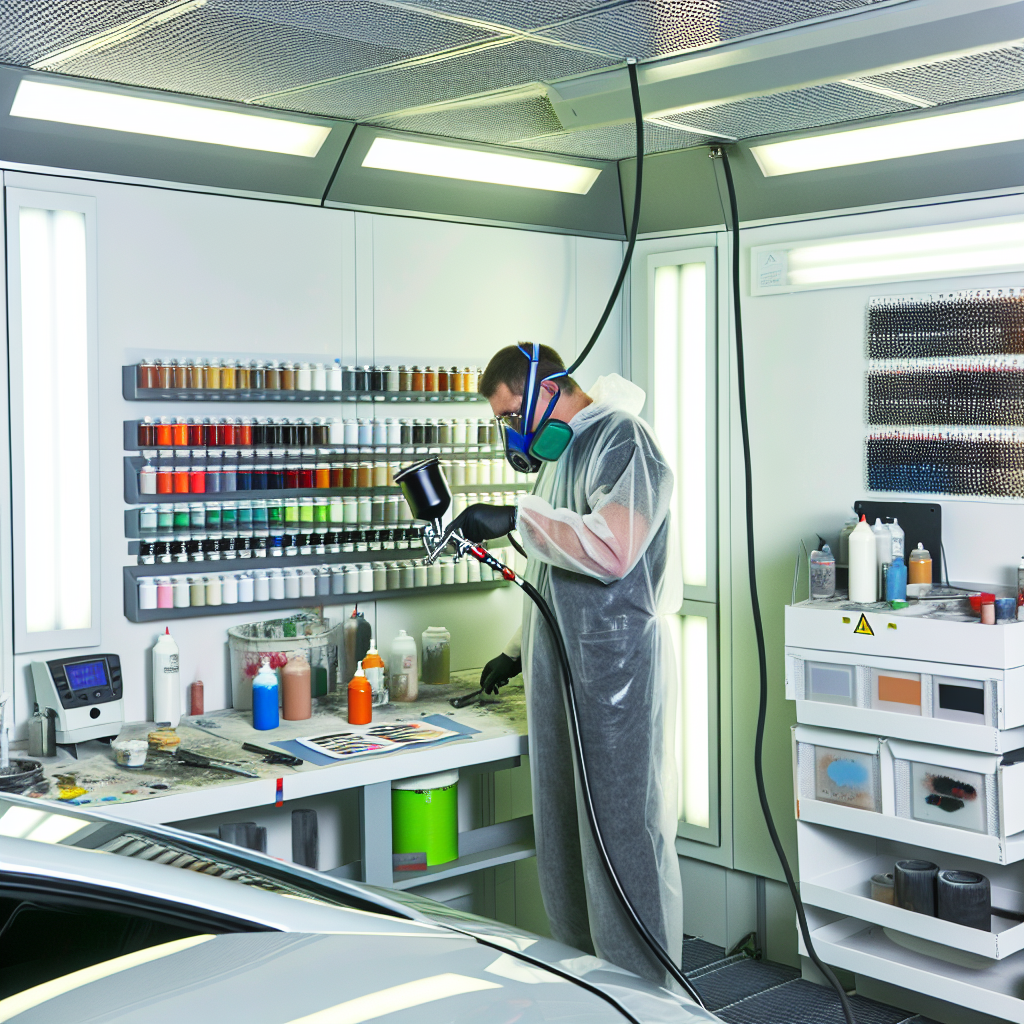
Image depicting an automotive painter at work, showcasing the precision involved in color matching. The visual emphasizes craftsmanship and technology in the art of automotive paint color matching.
Detail Technological Tools in Color Matching: The Role of Car Paint Technologies
In the automotive industry, achieving precise paint color matching is essential for both manufacturing and repair processes. Advancements in car paint technologies have significantly enhanced the accuracy and efficiency of this task.
Multi-Angle Spectrophotometers
Multi-angle spectrophotometers are pivotal in measuring and matching automotive paint colors, especially for finishes that exhibit varying appearances under different lighting conditions, such as metallic and pearlescent paints. These devices capture color data from multiple viewing angles, providing a comprehensive analysis of the paint’s appearance.
- MS3012 Multi-Angle Spectrophotometer: This instrument utilizes seven illumination sources and two receivers to measure color at 12 different angles simultaneously. It is designed to provide accurate and consistent color measurements for complex finishes, including metallics and pearlescents. Source
- Sherwin-Williams 5-Angle Spectrophotometer: This device captures color data from multiple angles and integrates with color retrieval software to enhance color efficiency and precision in the repair process. Source
Understanding Color Theory in Automotive Painting
Understanding color theory in automotive painting is fundamental, particularly when dealing with special effect paints. These paints, such as metallics and pearlescents, contain pigments that reflect and refract light, resulting in colors that shift based on the viewing angle and lighting conditions. Multi-angle spectrophotometers are essential for accurately measuring these variations, ensuring a precise color match. Source
Integration of Technology and Artistry
The fusion of technology and artistry in automotive painting is exemplified by the use of advanced spectrophotometers combined with skilled craftsmanship. For instance, PPG’s MoonWalk™ system measures toner quantities with exceptional precision, enhancing color matching accuracy. However, the final result still heavily depends on the technician’s expertise in applying the paint to achieve the desired finish. Source
In summary, the combination of multi-angle spectrophotometers, a deep understanding of color theory in automotive painting, and the integration of technology with human artistry has revolutionized automotive paint color matching, leading to more accurate and efficient processes.
| Company | Product Types | Key Innovations | Industry Impact |
|---|---|---|---|
| PPG Industries | Waterborne coatings, low-VOC coatings | PPG ENVIRO-PRIME® 2000 electrocoat | Reduces facility costs by up to 30% for automakers |
| Advanced color matching technologies | Leads in sustainability efforts and regulatory compliance | ||
| BASF SE | Automotive coatings | iGloss® clearcoat (superior scratch resistance) | Products adopted by premium brands like Mercedes-Benz and Tesla |
| Digital color matching platforms | Significant improvement in efficiency for custom colors | ||
| Axalta Coating Systems | 2K waterborne basecoats | Innovation in color science | Strong presence in the premium segment with Spies Hecker and Cromax |
| Investments in digital color management | Enhances operational excellence and customer satisfaction |
Artistic Techniques in Color Matching
Achieving the perfect automotive paint color match requires a remarkable blend of artistic craftsmanship and technological innovation. At the heart of this intricate process lies an often-overlooked tool: the spray-out card. This seemingly simple piece of material serves as the canvas for the painter and a critical component in the color matching journey.
The Role of Spray-Out Cards
Spray-out cards play a pivotal role in ensuring that the newly applied paint harmonizes flawlessly with a vehicle’s original color. The process begins with the painter selecting a spray-out card that complements the vehicle’s substrate color. This choice is crucial—whether it be a stark white, subtle gray, or a deep black shade. It’s the artist’s eye for detail that determines the best match to begin the artistic pursuit of color precision.
Creating the Art
With the spray-out card in hand, the painter meticulously mixes the paint, preparing it for application. Using specific spray techniques and maintaining a consistent distance, the painter expertly applies the paint to the card. Each stroke is deliberate, echoing the tactile nature of the artistry involved. This isn’t just a mechanical task; it requires an authentic connection to the material and a profound understanding of how paint behaves. The same fervor and finesse used in applying the paint to a car are mirrored in applying it to the card, ensuring accurate color reproduction.
Once the paint dries, it’s time for evaluation. The painter assesses the spray-out card under various lighting conditions, angling it to catch reflections, and closely comparing it against the vehicle’s original paint. This step is akin to an artist stepping back from their canvas to observe the painting from different perspectives, revealing nuances that the eye might miss up close. It’s during this meticulous review that the artist’s skill shines. Should any discrepancies arise, the painter doesn’t hesitate to adjust the formulation. This back-and-forth, this trial-and-error process, highlights the balance between art and science.
Balancing Artistry with Technology
While the artistic nuances are vital, contemporary painters don’t work in isolation. Advanced technology, such as spectrophotometers, enhances their capabilities. These sophisticated instruments capture color data and provide precise formulas, yet the real artistry lies in how the painter interprets and applies this information. The painter’s intuition guides the use of such technology, forging a symbiotic relationship that ensures color matches are not only accurate but also aesthetically pleasing.
Skillful Artisanship
Effective color matching is not just about technical knowledge; it requires a unique set of skills. Painters develop an acute attention to detail, allowing them to discern and address even the slightest variations in color. Moreover, a comprehensive understanding of paint properties and mixing ratios bolsters their ability to react and adapt quickly. Over time, these experiences foster a profound intuitive sense for color that goes beyond mere knowledge—it’s artistry born from practice.
In conclusion, automotive paint color matching stands as a prime example of how artistry, attention to detail, and technological prowess converge. The process of creating and utilizing spray-out cards exemplifies the painter’s journey, ensuring a flawless finish that is indistinguishable from the original car – a testament to the craft embedded in automotive painting.
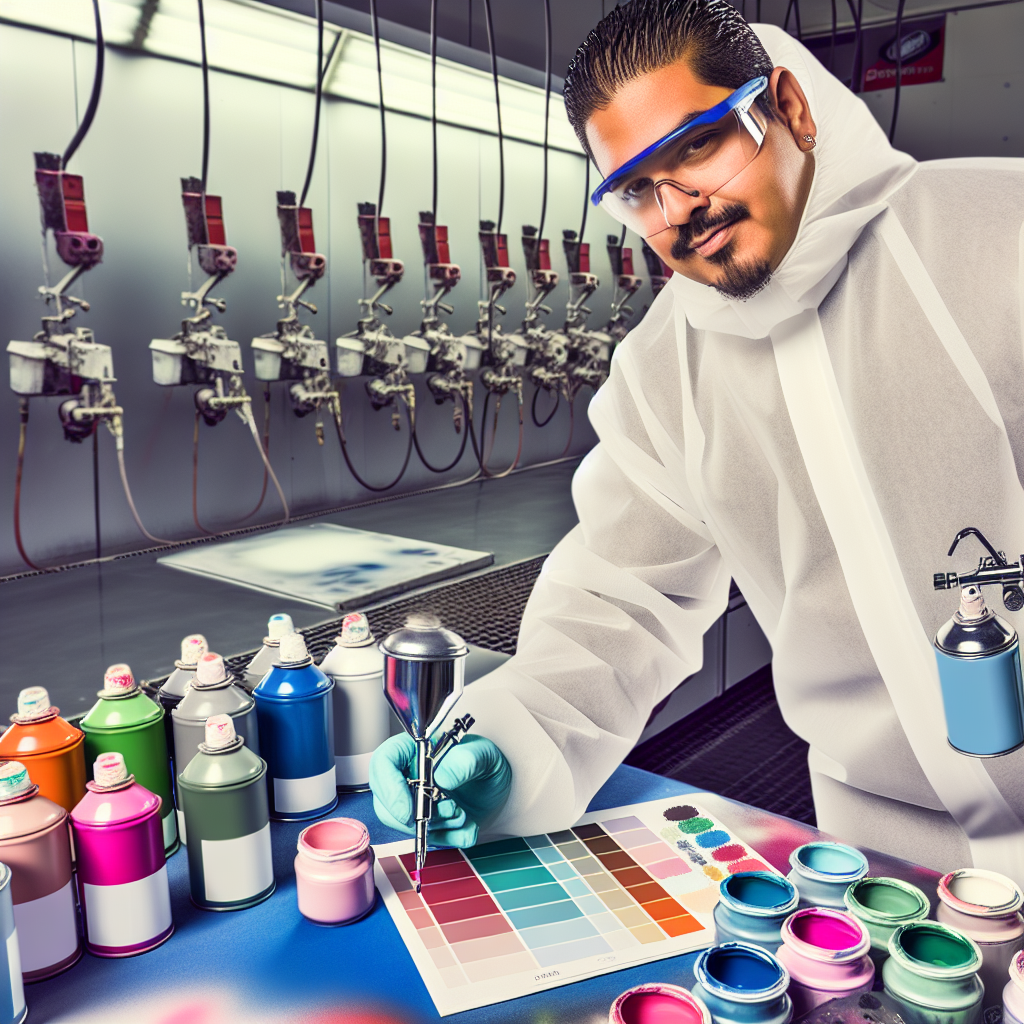
An image showcasing a spray-out card in the process of color matching in automotive painting, highlighting the vibrant paint application and tools involved.
Statistics on Color Preferences in Automotive Paint
The automotive industry in 2023 displayed compelling trends in color preferences, highlighting shifts towards more neutral shades while gradually integrating vibrant hues into the mix. According to recent studies:
- White remained the dominant color choice, constituting 27.6% of new car sales.
- Black followed closely with 22.0%, and gray at 21.3%. Together, these colors make up an impressive 80% of all new cars sold, a significant increase from 60.3% in 2004. Source
- Silver saw its popularity decline to 9.1%, down from 19.0% two decades ago. Source
- Colors like blue and red maintained stable shares, reported at 8.9% and 7.3% respectively, though more vibrant colors like green and orange are less abundant, each below 2% of the market.
- Notably, regional variations exist; for instance, in North America, white dominated across 40 states, while black was more favored in the remaining 10. Source
Trends and Observations
The trends indicate a clear consumer preference for understated and sophisticated vehicle colors:
- Achromatic colors surged by two percentage points in Europe, the Middle East, and Africa, showing a shift from light shades to darker tones like black and gray. Source
- In Asia Pacific, green’s allure grew, particularly with the rise of natural color shades, as consumers gravitate towards lighter options. Source
- Further, the use of effect pigments is on the rise, adding creative dimensions to both achromatic and chromatic shades, enhancing their visual impact. Source
In summary, the statistics reflect a decisive industry trend favoring grayscale colors while still showing signs of diversification into lively, warmer tones. As we progress through 2023, understanding these color preferences can assist manufacturers and auto painters in adapting to and anticipating consumer desires for their vehicle aesthetics.
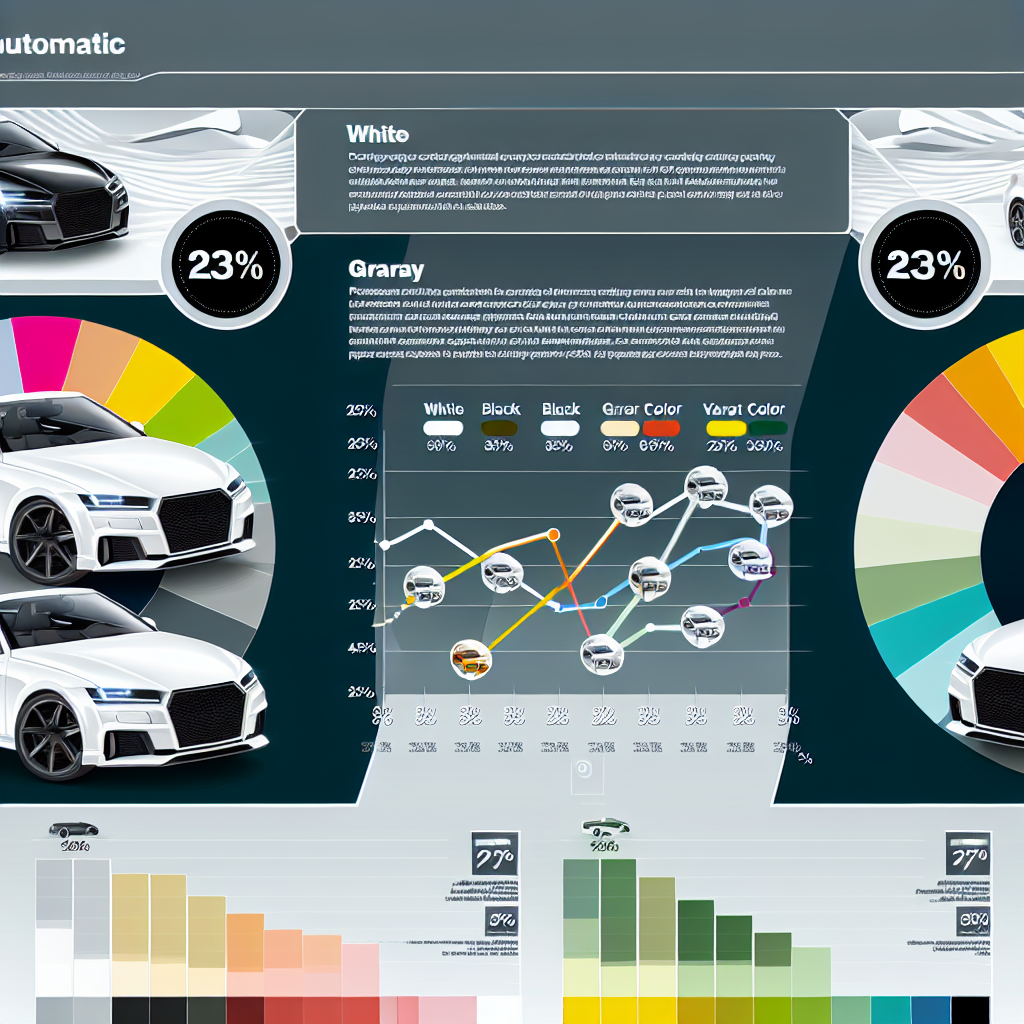
An infographic showcasing the trends in automotive paint color preferences for 2023. It visually represents the statistics of popular colors such as white, black, gray, and vibrant hues, highlighting their percentage shares and comparisons to previous years.
Conclusion
In summary, the world of automotive paint color matching masterfully blends the precision of technology with the creativity of artistry, ensuring that every vehicle maintains its aesthetic appeal. From advanced tools like multi-angle spectrophotometers that meticulously analyze color from various angles to the skilled hands of painters who wield spray-out cards with exceptional finesse, there’s a captivating synergy at play.
As technology continues to evolve, we can only imagine a future where artificial intelligence aids in color prediction and automated systems perfect paint applications. But no matter how advanced the tools become, it is the human touch—the artist’s keen eye and skill—that will forever remain integral to achieving that flawless match.
So, the next time you see a car with a perfect paint job, remember it’s the result of a beautiful dance between science and art, one that keeps getting more sophisticated and impressive with each brushstroke (or spray stroke) of innovation!
Debunking Myths About Color Matching
When it comes to automotive color matching, myths abound like those wild stories you hear at a family reunion—some are hilariously wrong, while others might just have a grain of truth buried within them. Let’s take a light-hearted journey through some of the most common misconceptions you may have come across, shall we?
Myth #1: All Paints are the Same
If you’ve ever had a mishap in the parking lot and hurried into a body shop demanding they use “genuine Mazda paint,” you might have been given a nod from the technician while they internally screamed. In reality, there’s a fascinating mix of chemistry and artistry behind that shiny coat. No paint is created equal, and the wrong shade—especially one that differs by mere millimeters—can be as noticeable as your uncle Bruce’s karaoke rendition of “My Heart Will Go On.”
Myth #2: Color Matching is Just Guesswork
Some might think painters just slap on a few coats of paint and hope for the best. Oh, if only it were that easy! Color matching involves precise calculations, multiple tools, and even an occasional prayer to the auto gods. It’s much more than mixing red and blue and calling it purple. It’s a science that Greg Poggiali would say is “part science experiment, part art project,” blending methods and artistry to achieve that perfect hue!
Myth #3: Pros Can Match Any Color Instantly
Another common misconception is that professional painters can whip up a flawless match just like that! However, if you think a painter can snap their fingers and voilà—exact match—you might be in for a rude awakening. The process often involves evaluating a spray-out card against the original paint in various angles and lighting. It’s less about magic and more about skill and patience—kind of like how your favorite chef perfects that soufflé, only with a bit more spray paint and a lot less egg.
Myth #4: You Can Only Buy One Type of Paint
Many people believe there’s one magic paint that will work for every car. Wrong! Depending on the vehicle and the issue at hand, you might need anything from single-stage to basecoat-clearcoat or even specialty finishes like metallics. It’s a buffet of options, rather than a set menu, ensuring that your car can maintain its superstar finish.
In conclusion, the world of automotive color matching is like a finely woven tapestry of myths, facts, and a few good laughs along the way. The intricate blend of science and artistry can sometimes leave room for misunderstanding. But as we peel back the layers, it’s clear that the next time you opt for a paint job, you’ll appreciate the skills involved, even if your Uncle Bob insists on matching his car to his beloved sock collection.
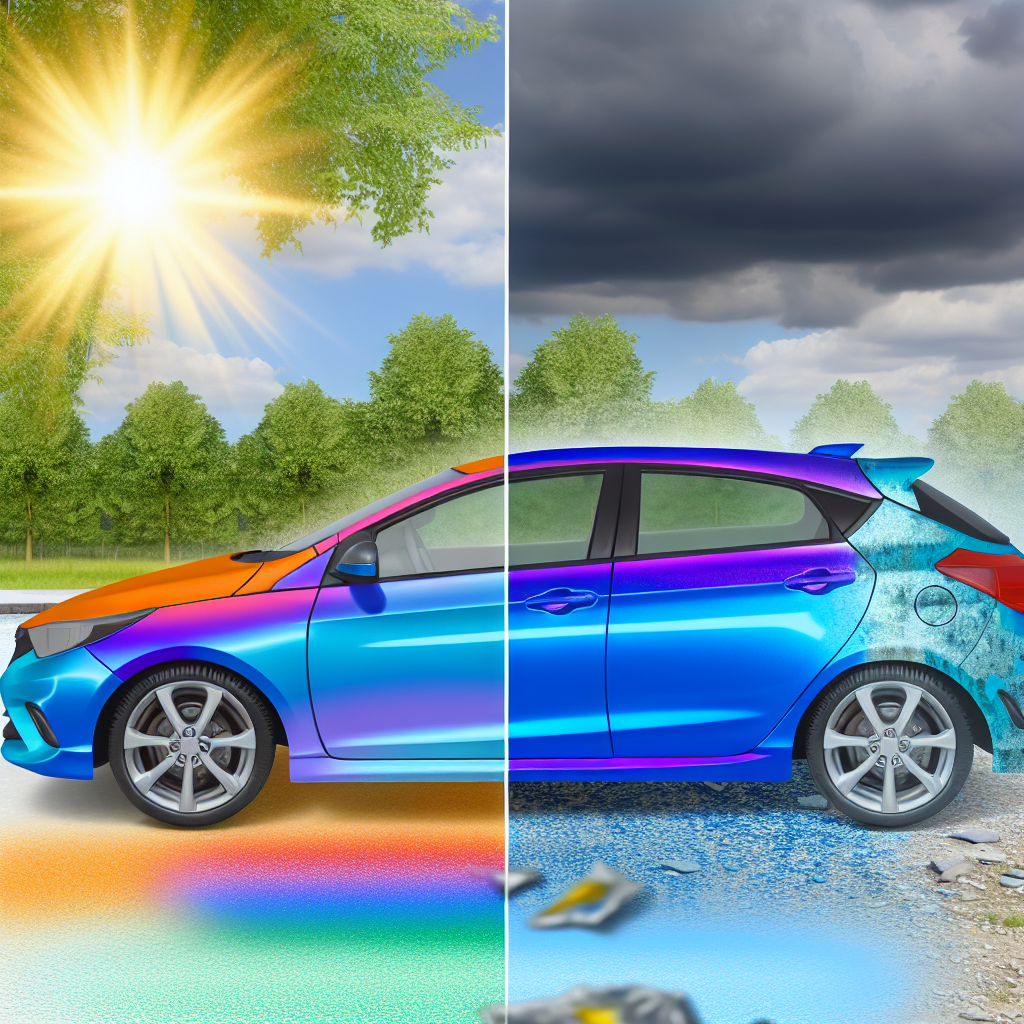
This illustration details the photodegradation effect on car paint over time, showing a vibrant car gradually transitioning into a faded appearance. Sunlight and weather symbols visually emphasize the deteriorating impact of prolonged exposure on the integrity and color vibrancy of the paint.
Real-Life Case Studies in Automotive Color Matching
Integrating real-life testimonials and case studies into our discussion of automotive paint color matching can truly enhance emotional engagement and provide practical insights. Here are some notable cases that illustrate this reality in action:
1. Intelligent Color Matching in Automotive Repair Chains
Achieving precise color matching is crucial for customer satisfaction in the automotive repair sector. A leading automotive repair chain transitioned from manual color matching to an intelligent system, significantly upgrading their workflow:
- Previously, complex finishes often required hours of color adjustments, resulting in high customer complaints. After implementing an intelligent color matching system, technicians could match colors within minutes using a spectrophotometer to gather data quickly and accurately. This new process led to a remarkable reduction in matching time and a significant drop in rework rates, ultimately resulting in happy customers who appreciated the seamless repairs. [source]
2. Fleet Uniformity for a Retail Chain
A UK retail chain faced challenges with inconsistencies across their vehicle fleet due to varying suppliers and materials. By developing a thorough color management plan in collaboration with a branding agency, they ensured that colors were uniform across their delivery vehicles. This effort not only enhanced the fleet’s appearance but also strengthened the retail brand’s overall image in the public eye. [source]
3. Emergency Vehicle Standardization
A metropolitan police department aimed to standardize the colors of its fleet to meet regulatory standards. By working with professional color matching services and utilizing advanced measuring techniques, they were able to successfully produce a fleet that met uniformity requirements while also enhancing public recognition and trust—demonstrating how color matching can influence not just aesthetics but also community relations. [source]
Testimonials on Customer Satisfaction
- Purnell Body Shop emphasizes that precise color matching is vital for ensuring vehicles look as good as new after repairs. Even slight mismatches can compromise a vehicle’s aesthetic and value, but their commitment to accuracy has led to high customer satisfaction and loyalty. [source]
These case studies and testimonials provide a clearer picture of how automotive paint color matching practices influence not just the technical aspects of repair but significantly affect customer perceptions and satisfaction. The commitment to precision and quality resonates in the experiences of both professionals and customers alike, showcasing the art and science behind achieving a flawless car finish.

